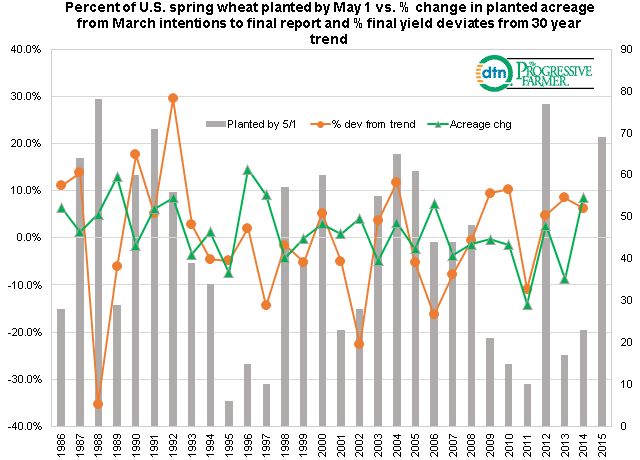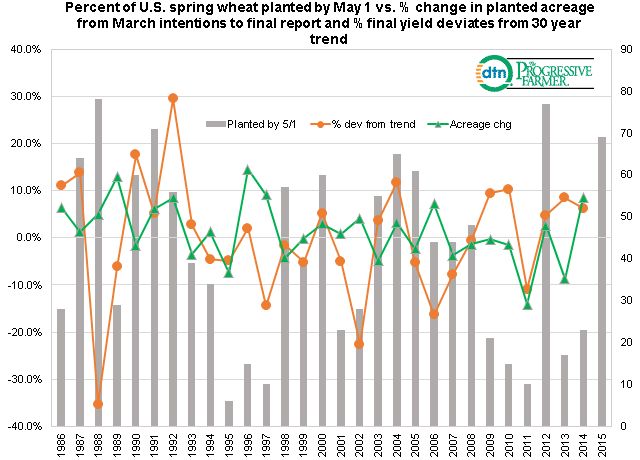Fundamentally Speaking
Spring Wheat Planting Date Impact
Due to the extended dry conditions in much of the Upper Midwest and Northern Plains, this year's crops grown in that region of the country are being planted at a very speedy pace.
Given the difficulties getting crops seeded on a timely basis in recent seasons in that area due to a number of wet, cold springs the current warm and dry conditions at least now is welcomed by producers though copious amounts of precipitation will soon be needed.
We are particularly interested in the fate of U.S. spring wheat where the vast majority of this wheat variety is grown. T
This graphic shows the percent of the U.S. spring wheat crop planted by May 1st on the left hand axis vs. the percent that spring wheat acreage changes from the March planting intentions report to the final figures and the percent that the final spring wheat yield deviated from the 1985-2014 trend.
P[L1] D[0x0] M[300x250] OOP[F] ADUNIT[] T[]
One might think that late plantings could lead to less intended acreage being planted with fast seedings resulting in higher acreage but that is not the case.
The correlation coefficient between the two data series is a very weak 9.7%.
Since 1986 on average about 42% of the intended spring wheat has been planted by May 1st but in five of the past seven seasons the planting pace has been much slower than that.
Last year only 23% was seeded by May 1 yet final spring wheat planted area was up 8.4% from the March intentions yet in other years of relatively rapid plantings such as 2003, 2005 and 2008 acreage declined from the intentions to final.
While farmers like to seed spring wheat as early as possible to prevent the critical heading period from occurring during the hottest part of the summer they usually don't have to worry about an early fall freeze.
As for impact on yields, also a very low correlation between that and percent seeded as of May 1st at 10.5%.
There have been years when a late planted crop such as seen in 2010 and 2013 yielded quite well while other years of fast seedings such as 1998 and 2005 have resulted in below trend yields.
Similar to corn, while spring wheat yields can be impacted by planting dates it is summer weather that is by far the most important factor in final yield determination.
(KA)
© Copyright 2015 DTN/The Progressive Farmer. All rights reserved.






Comments
To comment, please Log In or Join our Community .